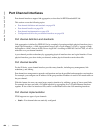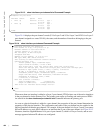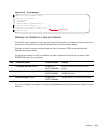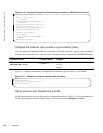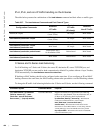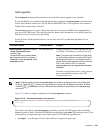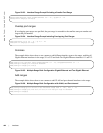
436 | Interfaces
www.dell.com | support.dell.com
Load balancing through port channels
FTOS uses hash algorithms for distributing traffic evenly over channel members in a port channel (LAG).
The hash algorithm distributes traffic among ECMP paths and LAG members. The distribution is based on
a flow, except for packet-based hashing. A flow is identified by the hash and is assigned to one link. In
packet-based hashing, a single flow can be distributed on the LAG and uses one link.
Packet based hashing is used to load balance traffic across a port-channel based on the IP Identifier field
within the packet. Load balancing uses source and destination packet information to get the greatest
advantage of resources by distributing traffic over multiple paths when transferring data to a destination.
FTOS allows you to modify the hashing algorithms used for flows and for fragments. The
load-balance and
hash-algorithm commands are available for modifying the distribution algorithms. Their syntax and
implementation are somewhat different between the E-Series and the C-Series and S-Series.
E-Series load-balancing
On the E-Series, the default load-balance criteria are a 5-tuple, as follows:
• IP source address
• IP destination address
• Protocol type
• TCP/UDP source port
• TCP/UDP destination port
Balancing may be applied to IPv4, switched IPv6, and non-IP traffic. For these traffic types, the
IP-header-based hash and MAC-based hash may be applied to packets by using the following methods.
Note: Hash-based load-balancing on MPLS does not work when packet-based hashing (load-balance
ip-selection packet-based
) is enabled.
Table 20-5. Hash Methods as Applied to Port Channel Types
Hash (Header Based)
Layer 2
Port Channel
Layer 3
Port Channel
5-tuple
XX
3-tuple
XX
Packet-based
XX
MAC source address (SA) and destination address (DA)
X



